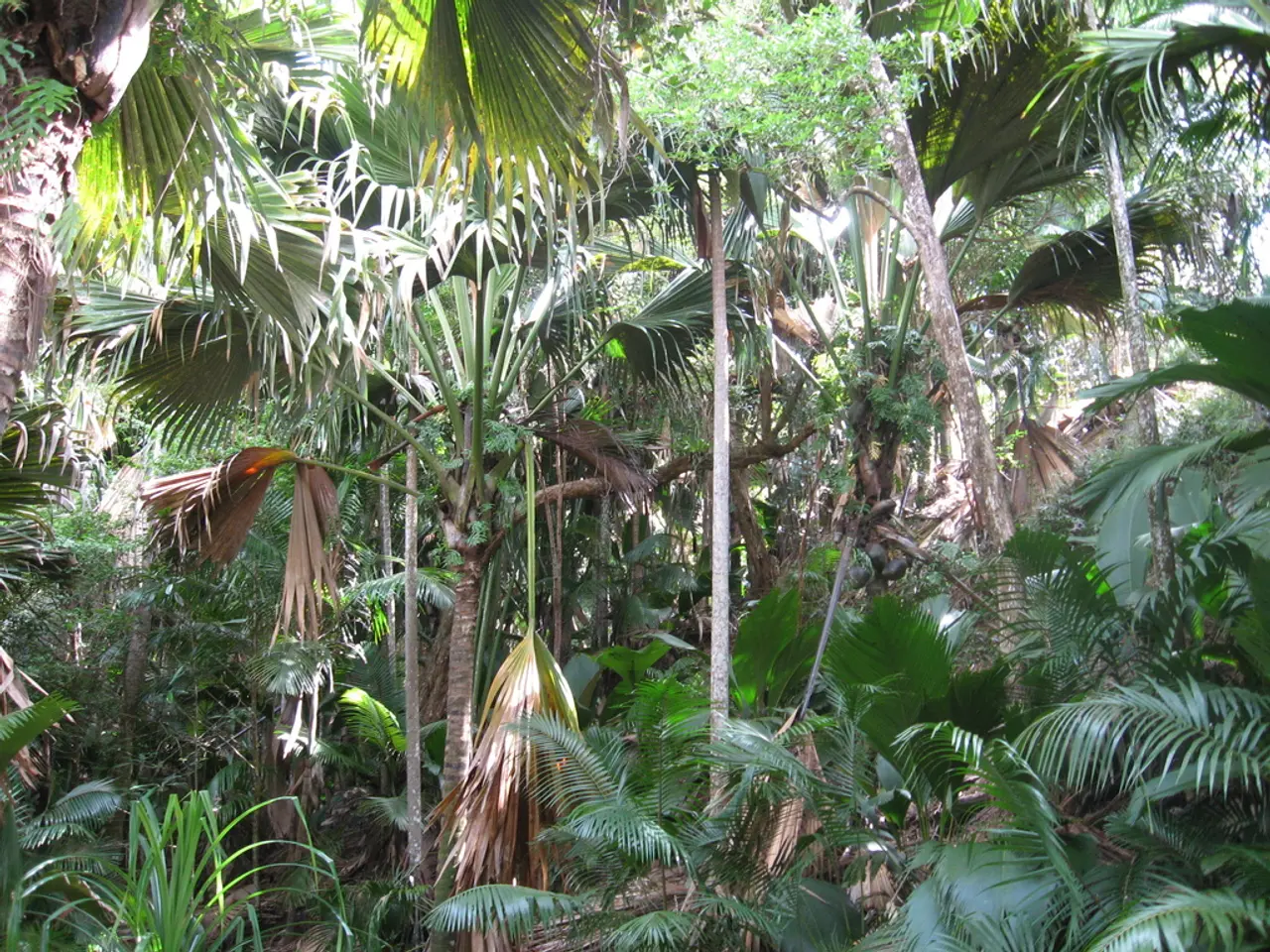Strategies for Establishing a Food-Bearing Forest Ecosystem: Comprehensive Guidebook
Tired of grocery shopping and yearning for a self-sustainable lifestyle? Why not transform your backyard into a bountiful permaculture food forest!
Imagine stepping outside your home to pick fresh fruits, veggies, and herbs, right from your very own forest!
Here's a simple, 4-step guide to grow a thriving food forest that'll make you the envy of your neighbors.
1. Plan and Design
Begin by researching your site conditions, such as sunlight, soil type, and water availability. Get a notebook to record your findings. Take note of local native plants and their specific needs for light, water, and shade. For a more in-depth education, add some vegetable gardening books to your reading list!
Next, sketch a design for your permaculture food forest, taking into account placement, layer structure, and plant preferences. Remember, layers in a food forest contribute to a balanced ecosystem, with crop-producing layers, along with habitats, insectaries, medicinal, and aromatic plants.
2. Choose Your Plants
Once you've studied up, select the plants you want to grow in your permaculture food forest. Find their seeds, leaves, or stems, and don't forget to consider nitrogen-fixing plants and dynamic accumulators to boost soil fertility.
3. Prepare the Ground
This step is crucial. Ensure that your soil has enough nutrients and water to support your food forest. Aerate the soil to promote root development and water infiltration.
4. Plant and Nurture
Start planting your defined layers, starting with the canopy and sub-canopy, and working your way down to groundcovers, root crops, and vines. Ensure that each plant adapts to the site conditions and grows at a steady pace.
Practice regular maintenance, such as chopping and dropping plant material, monitoring plant growth, managing competition between plants, and layering beneficial practices like mulching and water harvesting.
Embrace failure as a learning opportunity and never give up; ultimately, you'll create a lush, abundant food forest to feed yourself and your family.
Happy planting!
Explore more:
- Unleash the power of home gardens in comparison to industrial farms.
- Discover eco-friendly garden alternatives for a sustainable and nature-friendly outdoor space.
- Learn about implementing ways to protect your garden while embracing nature.
- Besides a self-sustainable lifestyle, delve into the realms of science and personal growth to enhance your knowledge in vegetable gardening.
- To complement your permaculture food forest, consider incorporating elements of health-and-wellness and fitness-and-exercise, such as growing herbs for natural remedies and creating walking paths for exercise.
- For a truly sustainable living lifestyle, explore ways to integrate solar panels or rainwater collection systems into your backyard food forest design.
- Adorn your home-and-garden with local native plants to foster relationships with the environment and create a habitat for local wildlife.
- Transform your home interior with a lifestyle inspired by your growing food forest, incorporating the colors and textures of your plants into your fashion-and-beauty choices.
- To maintain your well-nurtured food forest, consider careers in education-and-self-development, offering workshops and classes on organic gardening and sustainable living.
- Engage in job-search and career-development opportunities within the food-and-drink industry, showcasing your unique, homegrown produce to the public.
- Set aside a section of your permaculture food forest for your pets to enjoy, providing them with a safe, green space to roam and play.
- When traveling, seek out eco-friendly accommodations and visit local farms to gain inspiration for your own food forest and learn about different farming techniques around the world.
- To broaden your horizons, indulge in shopping trips for gardening tools, books, and skills-training resources to further fuel your passion for sustainable living and personal growth.





